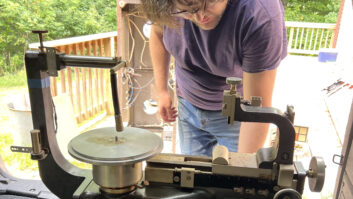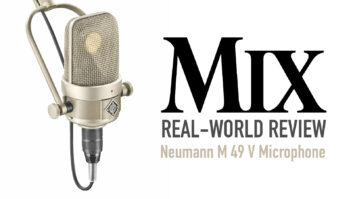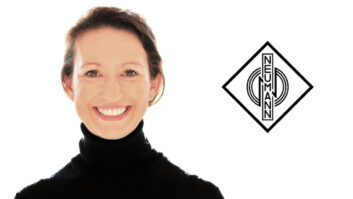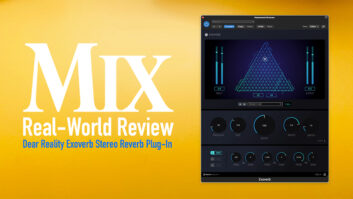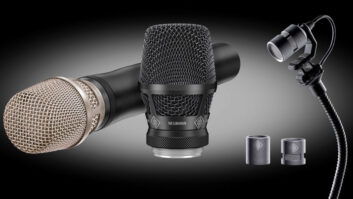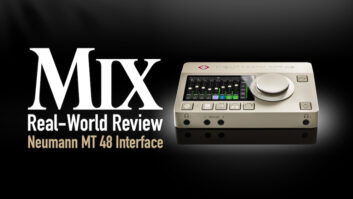In 1953, Neumann engineers began developing the AM 32, a disk lathe with the ability of varying the groove pitch, controlled by the amplitude of the input signal, rather than a constant pitch. By mounting a preview head on the source tape deck, its signal could be fed to the lathe’s drive, which made a small adjustment in the groove spacing approximately one-half rotation before the cutterhead received that same signal from the playback head. (Click here to view/download an AM 32 datasheet.)

The Neumann AM 32 lathe and stereo cutterhead brought major advances in disk cutting technology.
Co-developed with Teldec (a joint venture of English Decca and German Telefunken), the Neumann ZS 90/45 stereo cutterhead arrived in 1956 and combined vertical and lateral recording in a V-shaped groove, each slope set at an angle of 45 degrees. The ZS 90/45 was driven by the VG1 (Verstärkergestell Eins) cutting electronics with two 60-watt tube amps. (Click here to view/download a copy of a ZS 90/45 datasheet.)
Besides controlling groove pitch, the system’s SA 32 carriage could also use the difference between the left and right signals to modulate the depth of the cut and also adjusted the groove pitch based on the depth of the cut, as deeper cuts require wider grooves. This first electrodynamic feedback stereo cutterhead system set the stage for the world-standard SX 45, SX 68, SX 74 and SX 84 cutterheads that followed.


